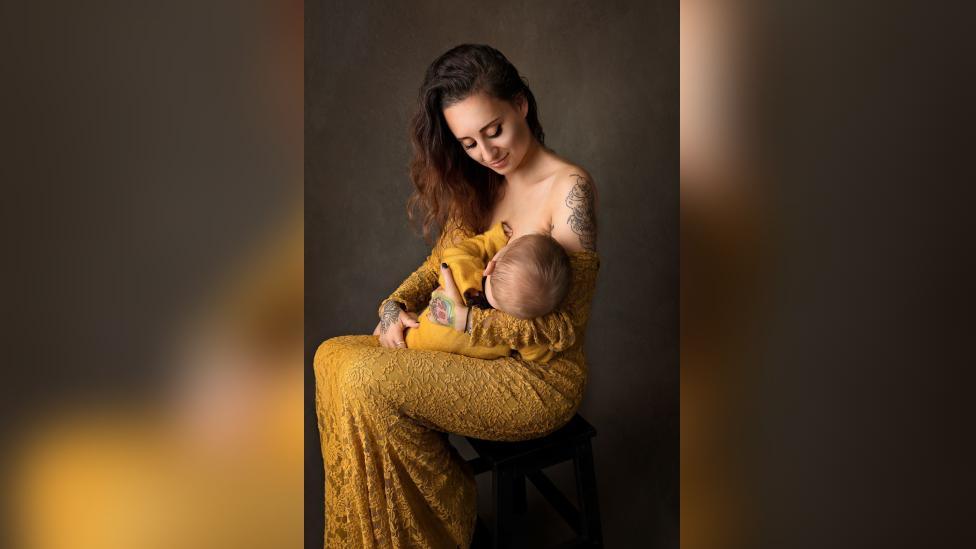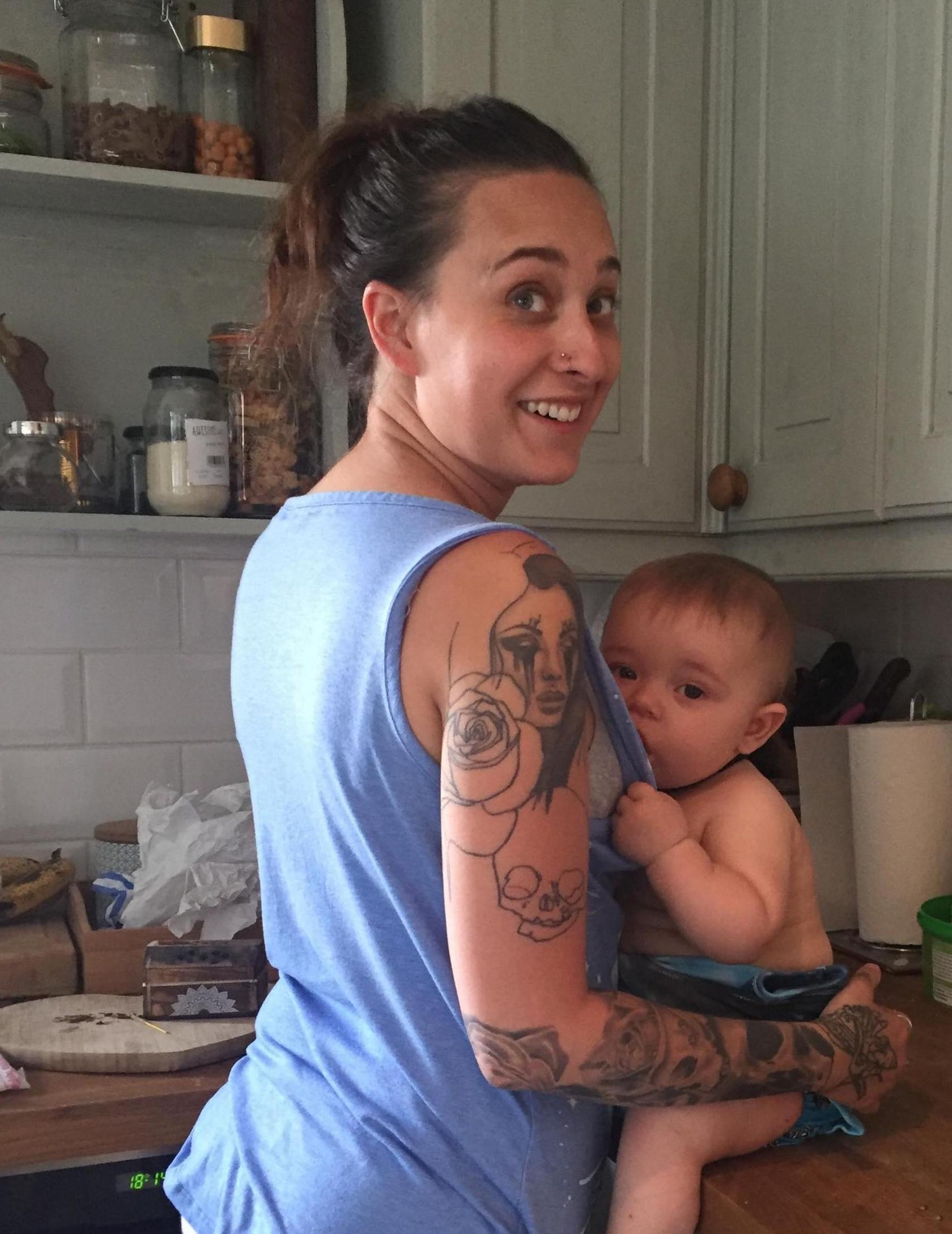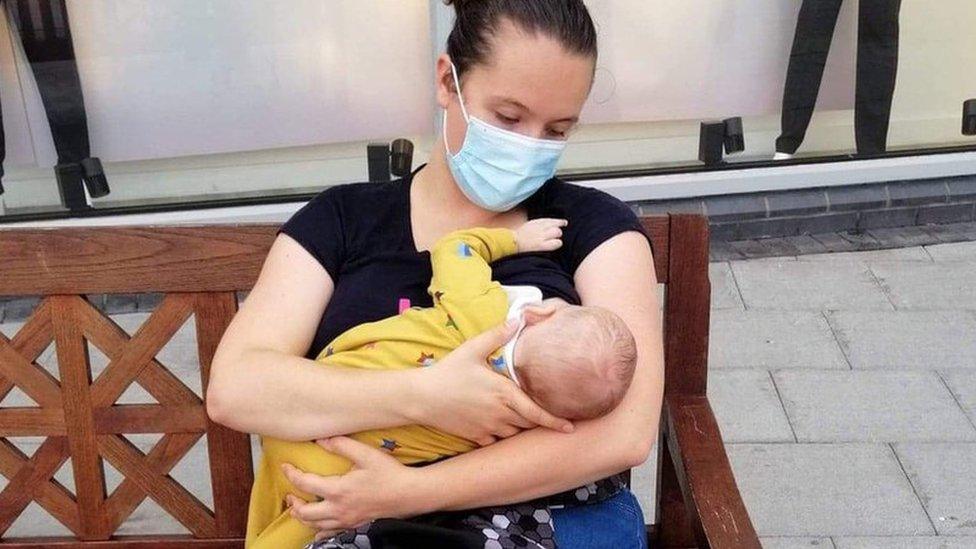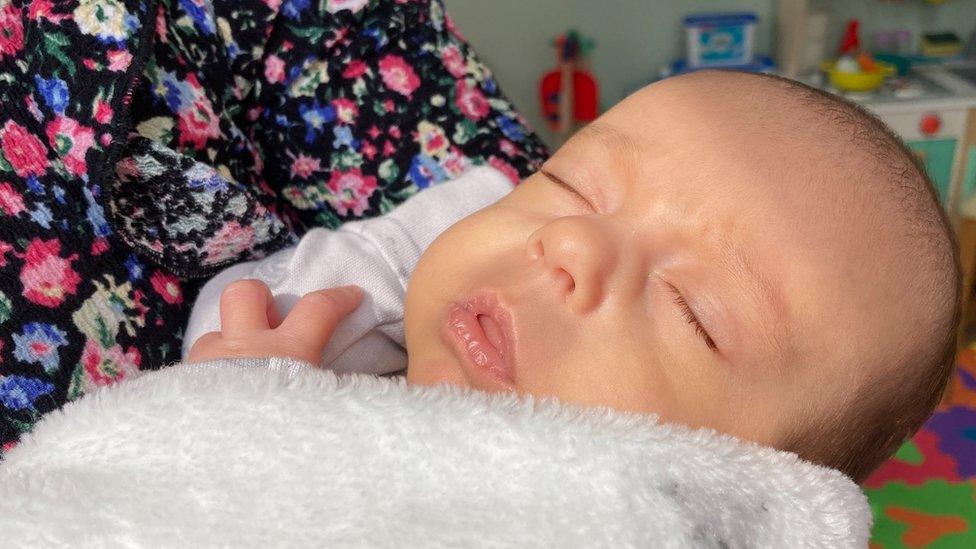Breastfeeding: Why did rates go up in lockdown?
- Published

Lessons should be learnt from lockdown, when breastfeeding rates unexpectedly increased, researchers have said.
A study, external, which included all women in Wales who gave birth between 2018 and 2021, found breastfeeding rates at six months went up from 16.6% before the pandemic to 20.5% in 2020.
The study's lead author Hope Jones believes it was down to families spending more time at home and wants to see interventions to replicate that.
Mum-of-three Harriet Valentino agrees.
Her youngest child Cosmo was born in May 2021 when there were still restrictions in place.
"There was less pressure on us, there were less people breathing down your neck, making sure your baby was weighed every two seconds," said Harriet, 34, from Barry, Vale of Glamorgan.
"My husband was here looking after our other children, he was doing things to help me and the baby so I could sit down, I could relax uninterrupted and I have that time to figure it out.
"With all the restrictions and not having anyone come to my house I had plenty of time to do that."

Harriet says Facebook groups were a lifeline for breastfeeding mothers during lockdown
Cosmo was born at home and midwives stayed for the first feed.
"I never saw a breastfeeding person again, that was it," said Harriet.
When issues arose she said she turned to books, Facebook groups and friends.
"Thank goodness for social media platforms, because there are so many helpful groups online these days that you can reach out for support," she said.
Harriet would like to see partners given more paid leave or the opportunity to work from home after the birth of a baby.
"It's their new baby as well, and the mums do need help and support at that stage. Especially if you've got other children to be looking after as well," she said.
"As a parent of multiple you have to get up and get on with everyday life, take other children to school, go out to do the shopping - you can't just leave everything and sit at home in bed with your new baby.
"If your partner was home they could go out and do these things and you would have that time to establish breastfeeding."
What are the benefits of breastfeeding?
The UK has one of the lowest breastfeeding rates in the world.
Although 80% of new mums breastfeed for their baby's first feed, just 0.5% are still breastfeeding at one year, external.
World Health Organization (WHO) and the UN children's agency Unicef recommend that children are exclusively breastfed for the first six months of life.
WHO says breastfed children perform better on intelligence tests, external, are less likely to be overweight or obese and less prone to diabetes later in life.
Women who breastfeed also have a reduced risk of breast and ovarian cancers.
Hope Jones is part of the Born In Wales, external research project based at the National Centre for Population Health and Wellbeing Research (NCPHWR).
The study she worked on also found that women who said they intended to breastfeed were 27.6 times more likely to continue exclusive breastfeeding to six months compared to those who did not intend to breastfeed.
It also found black mothers were 1.86 times more likely to exclusively breastfeed for six months compared with white mothers.
Would hybrid working help new mums?
The rise in women breastfeeding at six months during lockdown has led her to believe that offering new mums hybrid working and giving more generous paternity leave could be key to improving breastfeeding rates in the UK.
"It's really surprising as we expected the rates would be the lowest during the pandemic because there was minimal support, they couldn't go into the hospital that much, they were not able to see lots of people that might have been able to help them - but actually the rates were the highest," she said.
She believes there were a few factors behind the rise.
"Women were able to be at home with their baby, they were able to have more time with their partner at home, they could do more flexible working if they were going back to work," she said.

"It kind of removed that barrier of 'oh, now I've got to go back to my really busy life' and meant women could put the time into breastfeeding and engage with that at home."
Rates have now returned to pre-pandemic levels. Hope believes in order to get back to the levels seen in lockdown there needs to be change in the workplace.
"If we as a society want to improve the breastfeeding rates in the UK, then there'd have to be a look at the working life of women and their partners," she said.
What leave is currently available to partners?
Statutory Paternity Leave, external allows employees to take one or two weeks of leave when the baby is born. They are entitled to £172.48 per week or 90% of their average weekly earnings, depending on which is lower.
Shared parental leave, external allows mothers to end maternity leave early so that one or both parents can take leave during the baby's first year. Parents can take time off at the same time or separately.
Unpaid parental leave, external allows each parent who is a permanent employee to take a total of 18 weeks' unpaid leave for each child up until their 18th birthday. It is limited to a maximum of four weeks per child per year and can only be taken as whole weeks, unless your child is disabled.
- Published6 June 2021

- Published12 April 2022

- Published15 December 2017
